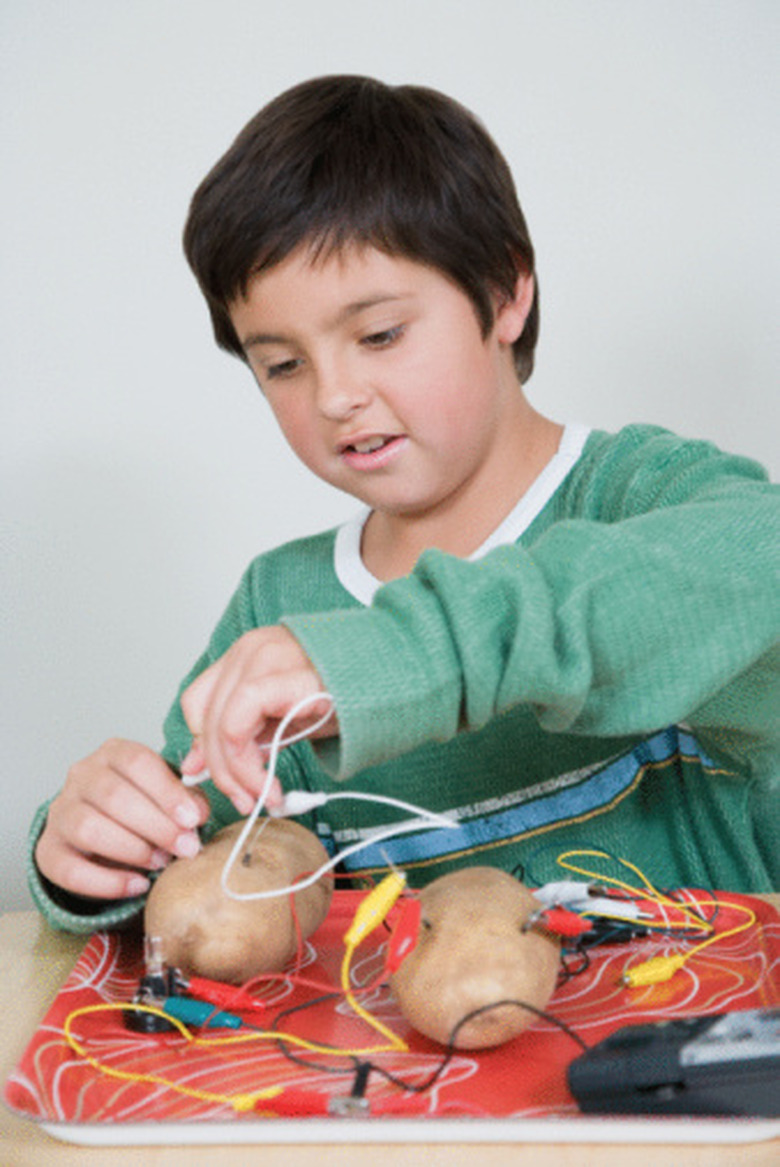What Are Three Important Parts Needed To Make A Battery?
A battery is a voltaic cell, also known as a galvanic cell (or a group of connected cells). It is a type of electrochemical cell used to provide electricity created by a chemical reaction. A simple battery can be constructed by placing electrodes of different metals in an electrolyte fluid. The chemical reaction that occurs produces an electric current. Thus, the three main parts of a battery are the two electrodes and the electrolyte.
Voltaic Cells
Voltaic Cells
Some metals lose electrons more readily than other metals. This can be exploited to produce a flow of electrons from one piece of metal to another, by submerging two pieces of different metals in a conductive solution, such as a solution of metal salts. This is called a voltaic cell. Zinc and copper can be used to make a voltaic cell because zinc gives up electrons more readily than copper. The metal plates are called the electrodes: the anode and the cathode.
The Cathode
The Cathode
A cathode is one of the two electrodes in a polarized device such as a voltaic cell. Current flows out of the cathode. A useful mnemonic for remembering this is CCD: Cathode Current Departs. (Note that this refers to the direction of the conventional current, not the electron flow, which is in the opposite direction.) In a discharging battery the cathode is the positive electrode. In the case of a battery using copper and zinc electrodes, the cathode is the copper electrode.
The Anode
The Anode
In a polarized electrical device, the anode is the terminal where current flows in. A mnemonic used to remember this is the word ACID: Anode Current Into Device. (Again, this refers to conventional current, not the electron flow.) In a device which provides power, such as a discharging voltaic cell, the anode is the negatively charged terminal. In a cell made with zinc and copper plates, the anode is the zinc plate.
The Electrolyte
The Electrolyte
In a voltaic cell, the electrolyte is a conductive fluid. A good current can be obtained by submerging a copper electrode in a solution of copper sulfate and a zinc electrode in a solution of zinc sulfate, with a conductive bridge between the two containers of electrolyte. When building a battery, however, any conductive fluid can be used. A glass of salty water is one possibility; other sources of electrolyte include fruit juices.
Making a Battery
Making a Battery
A battery can be made using a piece of fruit or a vegetable such as a lemon or a potato to provide the electrolyte. The juice inside is conductive so when two pieces of metal, such as a copper penny and a zinc nail, are pushed into the fruit, an electric current is produced. This can be used to power a small electronic device with a low power requirement, such as a digital display.
References
- HyperPhysics: Batteries
- HyperPhysics: Electrochemical Cells
- HyperPhysics: Voltaic Cells
- Hila Road: Lemon Battery
- Av8n.com: How to Define Anode and Cathode
- Fisheries and Marine Institute of Memorial University of Newfoundland Fisheries and Marine Institute of Memorial University of Newfoundland: Conventional Current vs. Electron Flow
Cite This Article
MLA
Edwards, Clare. "What Are Three Important Parts Needed To Make A Battery?" sciencing.com, https://www.sciencing.com/three-parts-needed-make-battery-8391238/. 24 April 2017.
APA
Edwards, Clare. (2017, April 24). What Are Three Important Parts Needed To Make A Battery?. sciencing.com. Retrieved from https://www.sciencing.com/three-parts-needed-make-battery-8391238/
Chicago
Edwards, Clare. What Are Three Important Parts Needed To Make A Battery? last modified August 30, 2022. https://www.sciencing.com/three-parts-needed-make-battery-8391238/
